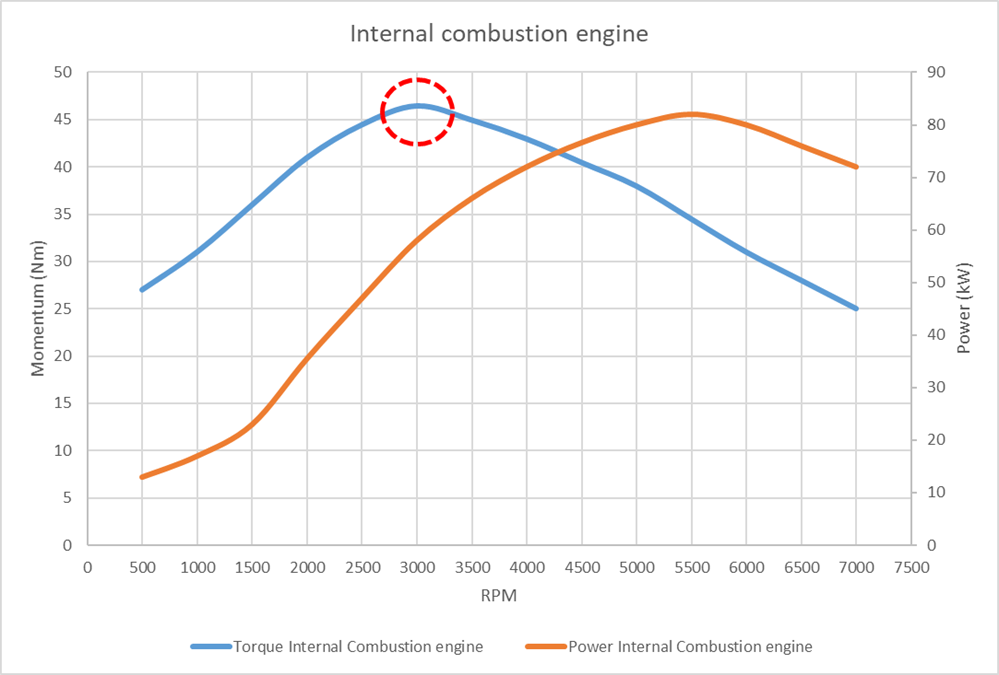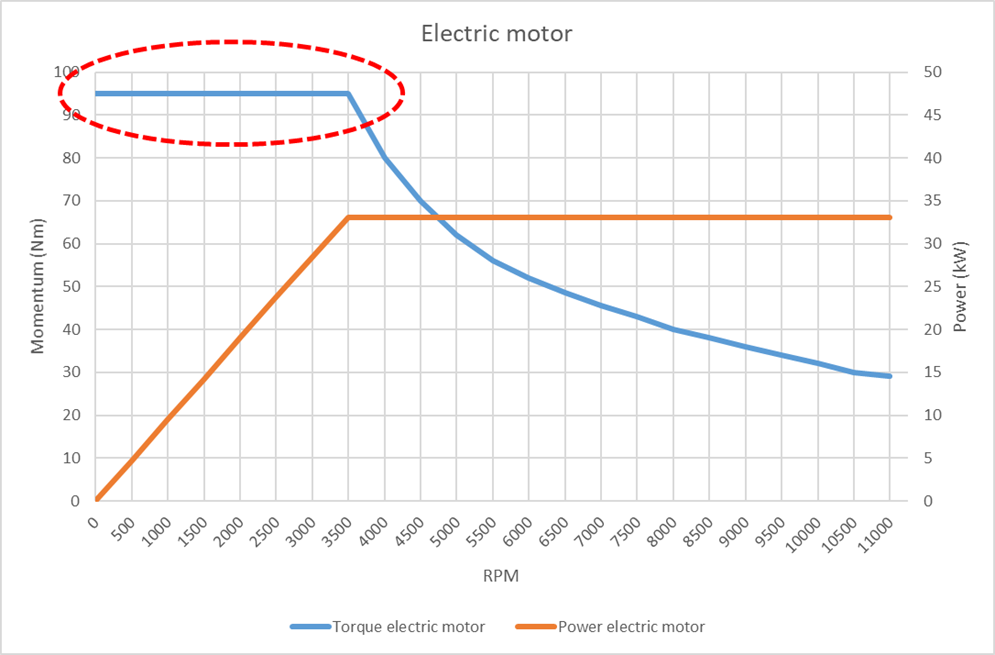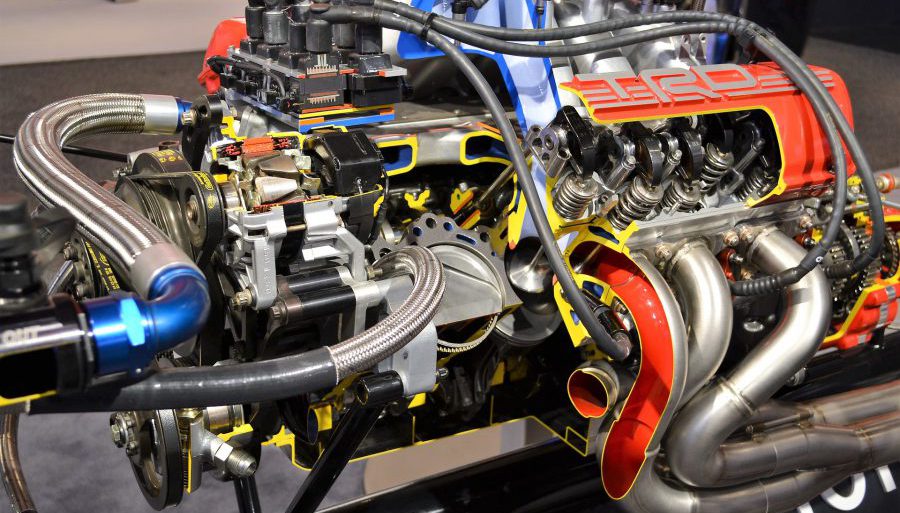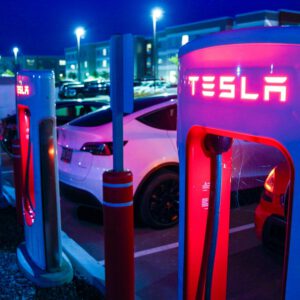Since a long time, fossil fuel cars are the most common cars in the world. Since a few years however, cars with alternative drive trains are emerging. Some of them are the hybrid car, the battery electric car and the hydrogen fuel cell car. Because the number of especially battery electric cars is increasing lately, I am comparing the three most important car drive train technologies in this article.
Fossil fuel car drive train
The main parts of a drive train of a fossil fuel car are the internal combustion engine and the gear box. A combustion engine burns petrol or diesel leading to heat and movement. An internal combustion engine has high torque (and power) only in a small optimal speed range (see figure below). That is the reason that this engine has relatively low efficiency.
Rare earth elements are used in the catalytic converter, spark plugs and lambda sensor, like platinum, palladium, rhodium, lanthanum, yttrium and cerium. A part of these elements is difficult to recycle or not recycable at all because these elements are burned over lifetime in the catalytic converter. Mining of rare earths used in several parts of a fossil fuel vehicle have a high impact on the environment and on the CO2 footprint of fossil fuel cars.

Brakes in fossil fuel cars lead to loss of kinetic energy. They convert energy into heat, that is not available for movement. Furthermore, braking leads to generation of (partly toxic) particulate matter (fine dust).
Battery electric car drive train
Battery electric cars have two main components: an electric motor and a battery. An electric motor has a constant maximum torque, that is available from a speed of 0 rpm (see figure below). Electric motors used in cars are small, which keep space for a large trunk and often an additional frunk (front trunk).
Tesla Model S and Model X use an asynchronous induction motor. The Tesla Model 3 uses a Permanent Magnet Switched Reluctance Motor with Neodymium, which is a rare earth.
An advantage of an electric motor is that it can be used as generator. This way energy can be recuperated during braking. This saves energy, brake discs and brake pads.

Batteries used in electric cars are mostly Li-ion batteries. Tesla uses NCA batteries, or Nickel, Cobalt and Aluminum (LiNiCoAlO2). Most people think that these batteries contain mainly lithium. However, this is not true. The amount of lithium is about 5 kg in a 70 kWh Tesla Model S battery pack, weighing ~453 kg.
The amount of cobalt in Tesla Model 3 batteries is about 2.8% (~13 kg). The EV standard is about 8%. Tesla’s LFP battery is cobalt free.
Production of a battery electric car produces 15% to 68% more CO2 emissions than the production of an equivalent fossil fuel vehicle. During use however, a battery electric car produces 2.5x less than a fossil fuel vehicle. With more renewable energy sources producing electricity this efficiency is getting even better.
Hydrogen fuel cell drive train
Hydrogen fuel cell cars use hydrogen and oxygen to produce electricity in a fuel cell. A fuel cell car uses an electric motor to drive the car. The electric energy procuced by the fuel cell is stored in a battery. In fact, a fuel cell car is a battery electric car equipped with an extra energy source.
Hydrogen is not available in pure form in suffient quantities on earth, so it has to be generated. In 2019 steam methane reforming is the most common method to do this. This process uses energy (about 30% of the generated energy) and produces CO2. Another method to generate hydrogen is electrolysis. The efficiency of electrolysis is about 80%.
The generaged hydrogen need to be stored at gas stations and in cars. It is highly flammable and extremely volatile, because it is the lightest molecule in the periodic system. In a car hydrogen is stored in tanks at a pressure of 700 bar. This hydrogen pressure tank system weighs about 125 kg. Another disadvantage is that these tanks and the fuel cell itself take space in a car.
Fuel cells use a complex technology, that needs maintenance during use in vehicles. Further, they contain rare elements, like platinum and yttrium, which are relative expensive. Mining these elements have a high impact on CO2 footprint.
Conclusion
The technologies of drive trains differ quite a lot. Therefore, the characteristics are also very different. Efficiency, recycling, use of rare earth elements, all are very important when comparing these technologies.




